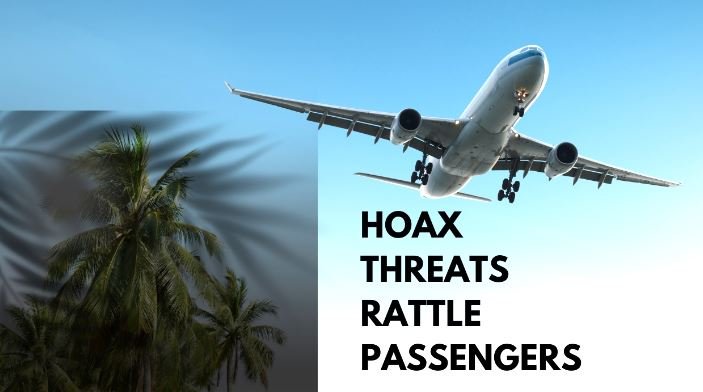Air travel, once seen as a convenient and relatively stress-free mode of transportation, is increasingly becoming a source of anxiety for passengers due to the surge in bomb threats. Despite the overwhelming majority of these threats being false alarms, each incident forces travelers to confront the disturbing possibility of a genuine terror attack. While aviation authorities and airlines have long relied on stringent security protocols to safeguard passengers, these measures cannot entirely quell the fear that a real threat might slip through undetected.
In recent days, this fear has been exacerbated by a wave of bomb threats targeting passenger flights, causing widespread disruption and inconvenience. Many bomb scares have been reported recently, disrupting flight schedules, delaying passengers, and straining aviation security systems. Although all threats were later confirmed as hoaxes, the sheer volume of incidents has rattled passengers and left airlines scrambling to respond. The chaos stems largely from a single anonymous account on the social media platform X (formerly Twitter), which has been responsible for issuing threats against more than 45 flights, both domestic and international. Alarmingly, 70% of the hoaxes were linked to this one source, revealing the ease with which an anonymous actor can cause widespread disruption. Aviation authorities, already on high alert, are now facing mounting pressure to restore public confidence in air travel. Safety has always been the top priority for airlines, but even non-credible threats require immediate attention. No airline or security agency can afford to ignore a potential danger, no matter how slim the chances. This principle of zero tolerance toward safety risks has made it nearly impossible to dismiss any threat outright, no matter how unfounded. The result is a delicate balancing act between maintaining rigorous security protocols and minimizing the operational impact of frequent false alarms. A series of bomb threats were reported on 24 flights operated by major carriers like IndiGo, Vistara, Air India, and Akasa Air. These incidents were part of the larger pattern that unfolded over the week, during which more than 90 flights were affected by similar threats. While all turned out to be hoaxes, the operational disruption was significant. In several cases, flights were diverted to alternate airports, leading to delays, cancellations, and logistical challenges. Passengers had to undergo additional security checks, while airlines were left dealing with the financial fallout from disrupted schedules, re-screening procedures, and the need to accommodate stranded travelers. The economic impact on the aviation industry is substantial. Diverting flights, arranging for alternate travel plans, and managing flight crew schedules—all while adhering to flight duty time limitations (FDTL)—add up to significant costs for airlines. Furthermore, frequent false threats not only inconvenience passengers but also erode public trust in the safety and reliability of air travel. Even though 99.99% of these threats are unfounded, the 0.01% risk is enough to compel authorities to treat every incident with the utmost seriousness. In response, the Indian aviation ministry is now considering a range of new measures aimed at addressing this rising trend of false threats. Among the options being explored are stricter regulations, potential legislative amendments, and the possibility of adding individuals responsible for hoaxes to no-fly lists. Authorities are also reviewing international aviation security standards to identify best practices that can be adapted to the Indian context. The goal is to strengthen the legal and regulatory framework to deter individuals from issuing false threats and to ensure that security protocols are both effective and efficient in minimizing operational disruptions. For passengers, the emotional toll of these incidents is considerable. The constant barrage of bomb threats, even if unfounded, creates an environment of heightened anxiety and fear. The once-assumed safety of air travel is now being questioned, with passengers left wondering if the next threat could be real. As these incidents continue, the aviation sector faces an uphill battle. Striking the right balance between ensuring public safety and minimizing disruptions will be critical in the coming days. Aviation authorities and airlines will need to act swiftly to rebuild public trust and restore a sense of normalcy in air travel.
Restoring confidence in the safety of flying is paramount, as fears—whether rational or not—could significantly impact passenger numbers and, in turn, the financial stability of the aviation sector.




